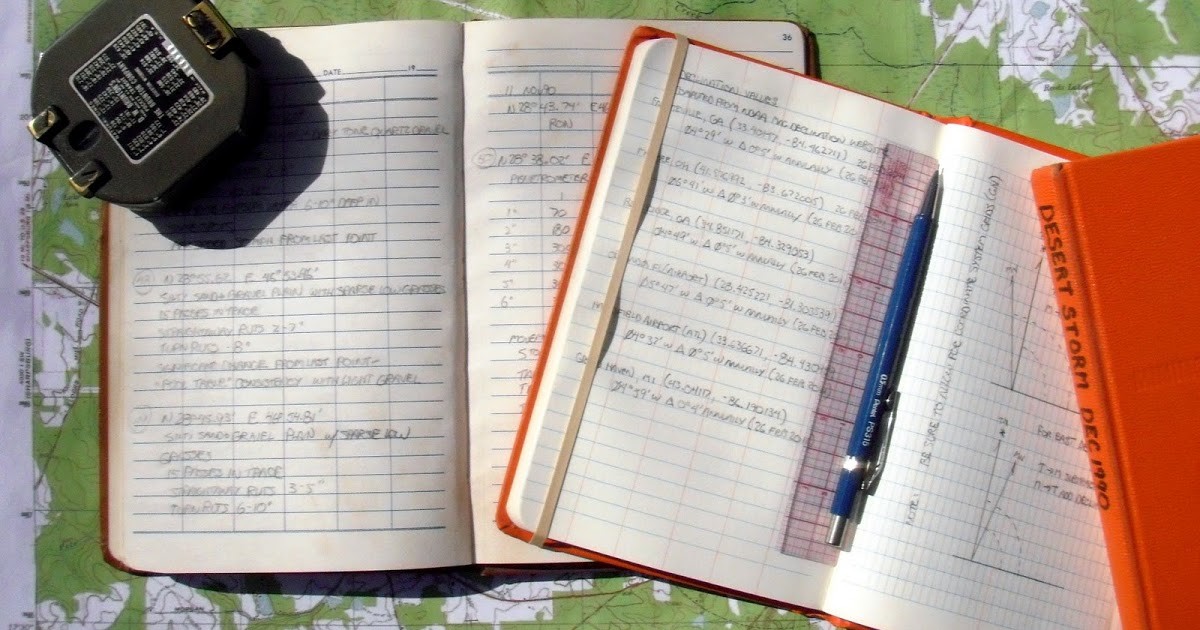I came across a very interesting blog called Northing and Easting, which is described as “A blog about mapping, surveying, geospatial technology and the history of the topographic sciences.” Of particular interest was a post about the use of field notebooks:
In the olden days (like, up until the 1980s) field notebooks were a staple of the surveying, engineering, geology and natural sciences disciplines. Â If you did any field work it got recorded for posterity in a field notebook. Â Taking and maintaining field notes was not just an art, it was often a legal requirement, particularly in the surveying field; the entries that surveyors made in their field notebooks constituted the legal record of a survey and those notebooks often were turned in at the completion of a project to become part of the permanent record.
Field note taking and recording was usually part of the early coursework for beginning engineering & surveying students, and you were graded on the completeness, legibility and accuracy of your note taking.  Pencil only!  Erasures not allowed!  Mistakes had to be lined through and corrected notations added.  Our geology field classes stressed accurate structural and stratigraphic mapping along with proper representations of rock types and strike and dip measurements.  It was common during field classes for our professors to pull out an old weatherbeaten field notebook and refer to notes they had taken years before on the rock formations we were studying.
Virtually all of the big name engineering and survey supply companies sold field notebooks.  They were all pretty much the same – a hard bound book filled with blank lined pages (or alternating lined and graph) about 5″ x 7″.  The paper was 50% cotton rag content and usually treated to ensure archival stability and prevent wrinkling  from high humidity.  Most books included tables of conversion formulas, trig functions, curve tables, etc. in the last few tables; things now easily handled by a simple scientific calculator.  My suspicion is that there were only a few companies that actually produced these books and just did job orders for the big manufacturers.  There was a slight difference in quality from manufacturer to manufacturer, and the K & E and Post field books I’ve got in my collection are clearly a step above the average field book with sturdier covers and radiused page corners.
Read more at: Northing & Easting: Field Notebooks
There is another post called Neatness Counts, where the author discusses a textbook on best practices for note-taking:
Bardsley & Carlton, Surveyor’s Field
Note Forms (3rd Ed.)
“A good surveyor takes pride in the appearance of his notes. Â A neat-appearing, well arranged set of field notes commands confidence and builds prestige in the surveyor.”“Field notes should be clear and convey only one possibly correct interpretation. Â Descriptions and narrative matter should be in acceptable English. Â Sketches should be drawn to approximate, or convenient, scales. Â All numerals indicating distances, angles, or elevation should be carefully formed. Â Particular care should be exercised in obtaining a logical order and sequence of all notes, for they should be absolutely clear and understandable to the student, other surveyors, computers*, or draftsmen.”
The book then goes on to provide specific examples of problems and how the field notes should be formatted (click on any image to open it full-size):
Length of Pace Measurement It was once common practice for surveyors to regularly measure and record their pace count over various types of terrain (flat, hilly, uphill, downhill, etc.). Â Before accurate handheld measurement devices like GPS surveyors used pace count to do help them with tasks like finding property corner stakes or do rough fence line measurements.
Correcting for Horizontal Slope
More images in the original post. All fascinating stuff!





I may be one of a few, but I find this greatly fascinating.